TV backlights explained: Edge-lit vs. full array vs. Mini-LED
TV backlights explained: Edge-lit vs. full array vs. Mini-LED

There'due south an unsung hero in your living room, a piece of engineering that has been steadily advancing for years, providing better and meliorate picture quality and more immersive entertainment, and information technology'due south one you may non even know exists. I'grand talking, of class, nearly the backlight in your TV.
What's a backlight? Well, it'southward the lite source that is situated directly backside the LCD panel of the majority of TVs. Information technology'southward what makes the screen glow, what gives bright colors their vibrancy, and increasingly, what gives nighttime shadows their depth.
Telly backlights have undergone a surprising amount of modify in the last few years, and knowing how this feature works, and what your options are volition go a long way in helping y'all get a better than average TV for a lower than average price.
- Tested and reviewed: The best TVs we've seen
- Try the best TV mounts for the Goggle box you already own
- Latest: Everything you need to know most buying a TV
Bones LCD TV beefcake
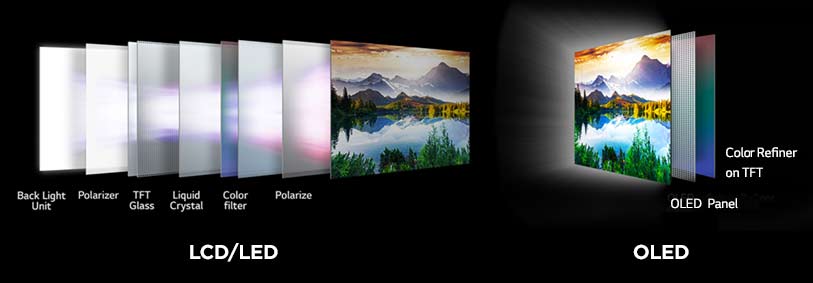
At that place's a piddling more to the glowing panel of an LCD TV than y'all might expect. The LCD panel offers the shape and color components of an image, simply it doesn't actually produce any light of its own. And without light to produce the colors we see and project the prototype outward to the viewer, an LCD Tv wouldn't be worth much. Enter the humble backlight.
Behind the LCD panel is a backlight, and betwixt the backlight and the LCD panel are usually a few layers of polarized filters, backlight diffusers, and other optical layers designed to turn this collection of tech components into a sharper viewable epitome.
The details will vary from 1 manufacturer or mode to the side by side, just the fundamentals that that technology is based on remain the same.
You lot'll have an LCD panel to provide much of the image content, and a backlight behind it to provide the light that makes that LCD panel visible and the colors vivid. Just that backlight has undergone a lot of changes over time — several just within recent years. And a lot of the improvements we've seen in modern TVs can be traced to the apprehensive backlight.
A brief history of Boob tube backlight
For the first several decades of consumer TVs, in that location was no need for a backlight. Cathode ray tube (CRT) technology doesn't demand one, considering it is a light source unto itself. Plasma screen TVs used the aforementioned sort of phosphorescence that CRTs used, meaning that they were likewise capable of emitting their own light.
Only with the advent of LCD-based flat screen TVs, the need arose for illumination, and originally that meant cold cathode fluorescent lamps (CCFL), a technology that'south similar to fluorescent and neon lighting. But because these lamps generate rut that can impairment a brandish and aren't terrible free energy-efficient, they've pretty much disappeared from today'due south TVs.
Instead, they were replaced past one of the biggest innovations in modern TV technology: LED backlighting. With this modify, Television receiver manufacturers started calling LCD TVs with LED backlight "LED TVs" to differentiate them from the older CCFL-lit models. But with the last CCFL TVs going off the market a decade ago, information technology'southward just as likely that Television set makers have kept the LED nomenclature around to blur the distinction between LCD TVs and OLED panels, which utilise a very different (and largely superior) display applied science.
Since then, LED backlighting has been refined in a number of ways, and there are several options on the market in today's TVs.
Modern backlighting: Local dimming and HDR
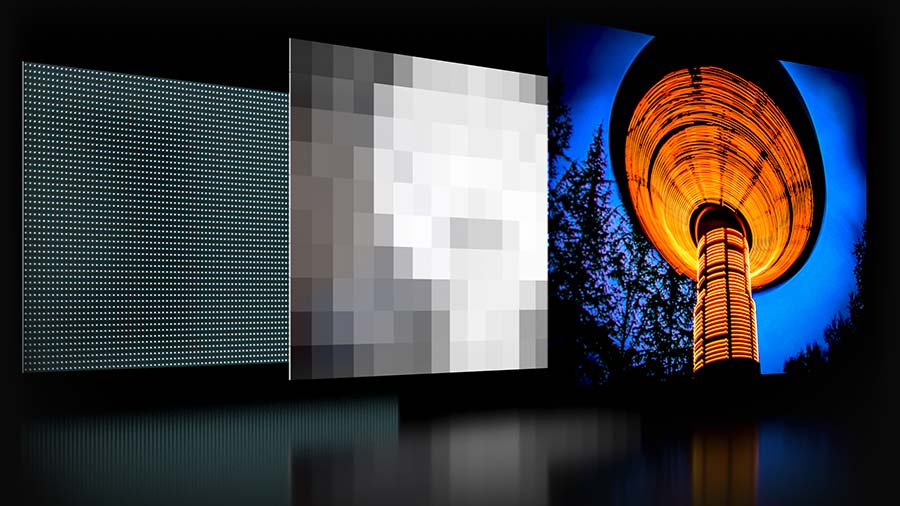
Today'southward TVs employ a number of backlighting methods, which we'll hash out below, simply the biggest change has been the introduction of detached backlighting zones. Instead of illuminating the entire screen, the LED backlights of a TV can exist addressed individually, meaning that they can exist turned on or off, dimmed or brightened as needed to provide brighter or darker portions of the TV picture.
Yous may not know much well-nigh the innovation of local dimming, merely y'all've probably heard of the feature it enables: High dynamic range or HDR. It's one of the best features on today's TVs, and ane we recommend paying attention to when shopping for a Television receiver. (Bank check out our articles What is HDR Telly, and why does it matter? and What Is Dolby Vision? to learn more.)
With local dimming zones allowing variable brightness to different sections of the display, new media includes additional metadata, beyond simple video and sound. This data describes the brightness and backlighting scheme for a given scene or frame of content. While that metadata may fall nether different format names, like HDR10 or Dolby Vision, the essentials are the same — describing how those dimmable backlights should acquit to produce a richer prototype.
There are different formats with varying degrees of granularity, simply the end upshot is that mod media takes this boosted brightness command into account, just as it would color and multi-aqueduct sound.
Only there's a catch. Not every form of backlight offers the same level of control. As a result, non every Television receiver has the aforementioned level of adequacy, fifty-fifty if information technology supports the same HDR formats.
And it all comes downwards to what type of backlighting is used.
Essential backlight technologies

Border lit
Edge-lit displays illuminate the LCD panel by setting a row of LEDs along the top and lesser edges of a screen, or ringing the perimeter of the TV frame with LED lights. This lite is then distributed beyond the back of the LCD panel with a special diffuser lite guide, a semi-transparent sheet of plastic that allows the lite from the LED in the Tv set bezel to illuminate a larger portion of the display.
It's a very cost effective fashion to lite a TV, since it uses the least amount of LEDs. It also offers some level of dynamic backlight control for HDR back up. On sets that are equipped to practise and so, portions of the edge lighting strips can be darkened or dimmed to provide deeper blacks, or brightened to accentuate brighter portions of the screen. However, since they don't direct lite the LCD panel from behind, the effect is considerably muted when compared to other backlight technologies.
Because these border-mounted LEDs tin be individually dimmed or brightened, edge lit TVs can offer some measure of dynamic backlight control for high dynamic range content. This can exist washed in two ways.
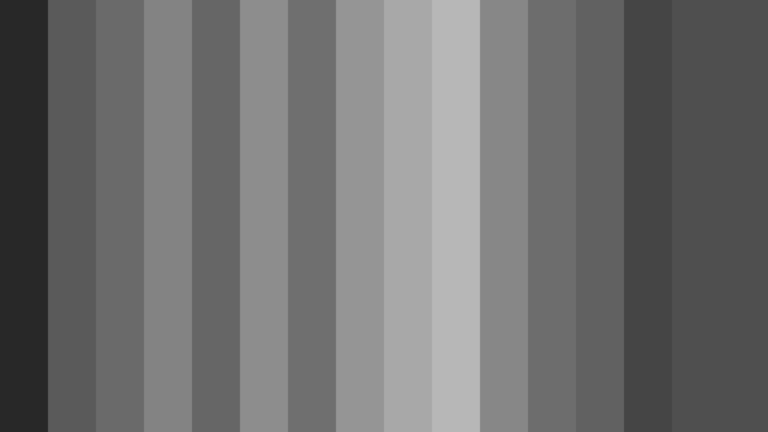
Showtime, the LEDs at the height and bottom of the display can be dimmed to alter the brightness in a vertical stripe, from the top to lesser of the display. This divides the display into 8-16 distinct dimming zones.
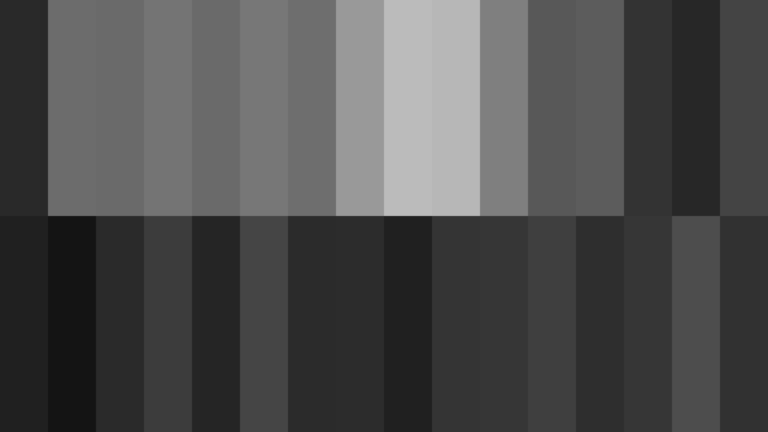
Second, pinnacle and bottom rows of LEDs tin be dimmed independently, effectively doubling the number of dimming zones.
Both of these methods suffer from the employ of broad, diffuse dimming zones, which mute the HDR event considerably, and will frequently illuminate unwanted portions of the brandish, an event called haloing.
Dual LED
A variation on edge lighting adult by Samsung and used in some Samsung QLED TVs is called dual LED. Instead of using a single colour backlight for the Boob tube, Samsung uses a combination of cool blue and warm yellow LED lights, and alternates betwixt them based on the content of the scene to offer a modest improvement in picture quality.
Direct lit LED
Direct lit LED backlighting uses LED lighting across the back of the TV, direct backside the LCD panel, providing a fairly uniform corporeality of calorie-free beyond the screen. It also allows for a brighter picture, since it uses more LEDs, and is able to utilize more than of the light coming from those LEDs.
However, an all-white back lite alone has its limitations. Because the entire LCD panel is lit uniformly, at that place'southward little to no dynamic range offered by the brandish.
One mutual problem caused by this compatible backlight approach is that darker portions of the brandish are still illuminated, resulting in black portions of the screen appearing grey, a miracle called "elevated black levels." It's specially noticeable on letterboxed movies, which will take a distinct unwanted glow in the black confined above and below the picture.

Full array with local dimming (FALD)
The next refinement for LED backlight is full assortment backlight with local dimming. This breaks up the backlight array of direct LED lighting, and separates information technology into multiple zones. These zones each illuminate a portion of the screen, and can be individually brightened or dimmed depending on the content in that section of the display.

This dynamic backlighting allows a TV to deliver deeper shadows, brighter highlights, and more vivid color. If you'll forgive the pun, this is where HDR content really shines.
Local dimming zones have become fairly mutual on TVs across the toll spectrum, and more premium TVs have differentiated themselves by offering a greater number of backlighting zones with smaller, more tightly controlled light, which can minimize low-cal blooms and haloing to provide better HDR functioning and contrast.

Mini-LED
Local dimming has been further refined with the introduction of mini-LEDs. By shrinking the LED size down to most one-fifth the size – mini-LEDs measure 0.008-inch (200 microns) across – more LEDs can be packed into the backlight panel, and much smaller dimming zones to exist used.
Where a standard LED backlight offers dozens of backlighting zones, mini-LED offers hundreds, and individual mini-LEDs can number in the thousands for a larger TV. More LEDs translate into brighter backlight, for a brighter more bright picture, as well as smaller lighting zones to reduce haloing.

The result is even more granular command of the backlight, with performance improvements in both overall dissimilarity and HDR performance.
Models from Samsung, TCL, and LG all utilize mini LED backlighting for its superior performance, and the combination of mini-LED and QLED colour enhancement offers some of the best TV pic quality that's ever been available.
Acquire more about mini-LED technology in our commodity Year of the mini-LED Television set: Samsung, LG and TCL getting this huge upgrade.
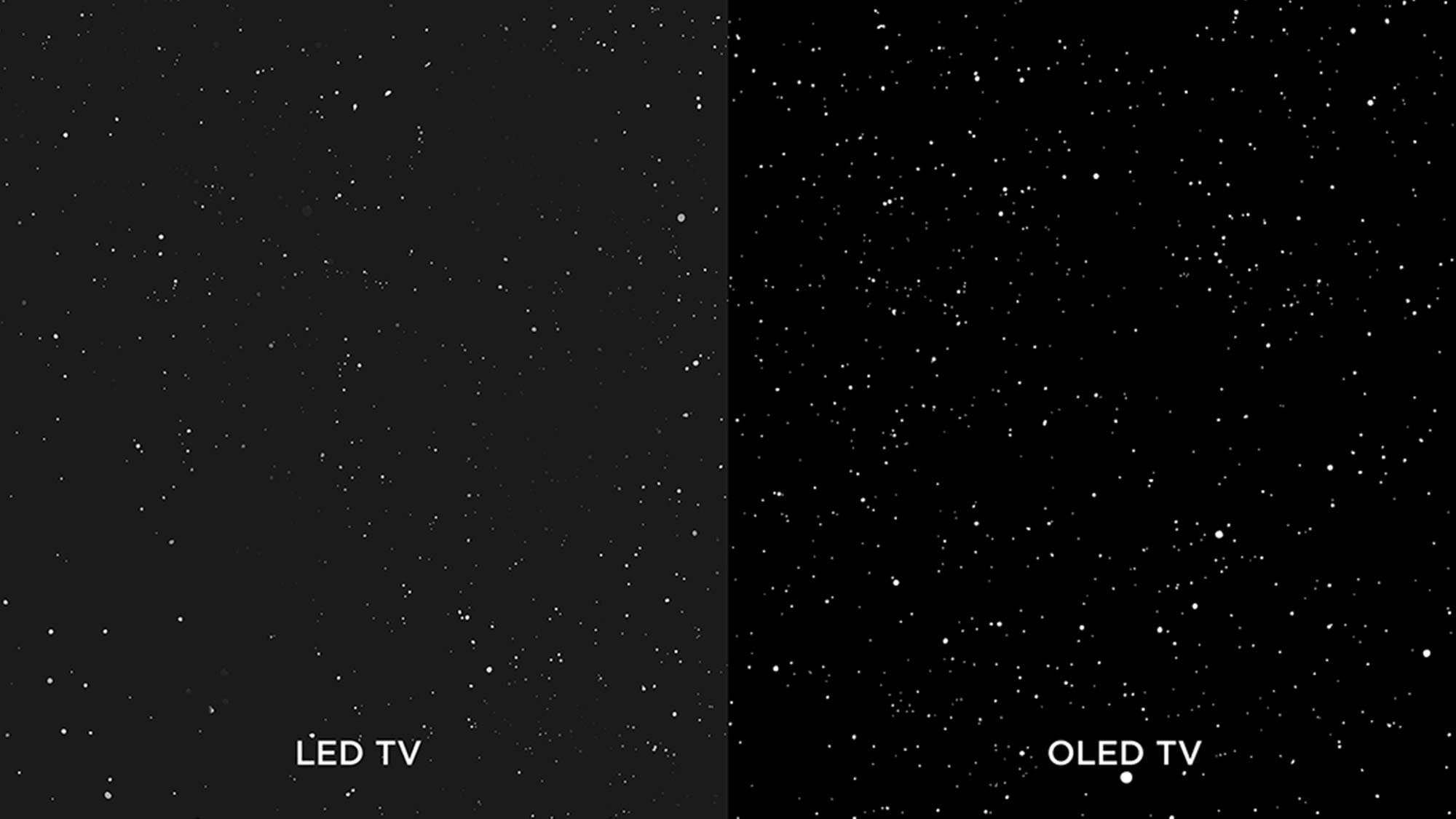
Per-pixel lighting
Ultimately, the best backlight is no backlight at all. This tin be achieved in one of ii means: With current OLED displays or micro-LED applied science, the latter of which isn't yet bachelor to regular consumers.
OLED displays take individual pixels that lite upward without the need for a split illumination source, creating a cocky-emissive brandish panel that doesn't demand any sort of backlight.
Considering illumination can be controlled at the level of individual pixels, OLED technology offers the highest level of dissimilarity and HDR performance, with no lite blooming, and true black reproduction as individual pixels go night.

Shrinking mini-LEDs down even smaller, you get micro-LED. Measuring every bit minor as 50μm — about 0.002 inches beyond — micro-LEDs are 1/100th the size of a conventional LED. That'due south small enough to cluster them together for individual pixels, creating another grade of self-emissive display. The first micro-LED TVs are on sale now, but with prices in the tens of thousands of dollars, they're not really something the average consumer would fifty-fifty consider.
Y'all can get a more than detailed explanation of mini-LED technology in our guide Micro-LED vs. Mini-LED: What's the difference? or read Micro-LED vs. OLED TV: Which TV tech will win? to see how the two leading self-emissive technologies compare.
Goggle box backlighting: What it means for you
All of this information is very interesting (at least, to some of united states TV nerds), but yous're probably wondering what this actually ways for you.
The lesser line is pretty simple: Meliorate backlight will translate into improve picture quality.
- Edgelit and direct backlight - Good
- Total array with local dimming - Better
- Self-immissive displays - Best
Just there'due south more than i style to approach full assortment with local dimming, because TVs will offer different numbers of dimming zones and local domain can be achieved with either standard LEDs or mini LEDs.
The rule of thumb hither is simple: More backlighting zones are improve, and many LED gives you lot the about backlighting zones.
And there'due south a straight relationship between backlight quality and Telly price, and then what is the best option when you don't want to pay an extra $1,000 for the category-leading quality of OLED – even the affordable Vizio OLED Television set is $one,199 – or shell out tens of thousands for a giant micro-LED Goggle box?
For near people, nosotros recommend looking for a Telly with mini-LED, like the Editor'southward Choice Samsung Neo QLED QN90A, or the more affordable TCL 6-Serial Roku Television set (R635). Mini LED backlighting hits the sugariness spot for affordability and improved backlight performance. If yous want better than boilerplate backlight control without spending the extra money for an onetime Tv set, a mini LED Television set is the fashion to go.
Source: https://www.tomsguide.com/reference/tv-backlights-explained-edge-lit-vs-full-array-vs-mini-led
Posted by: sartororibirlead.blogspot.com


0 Response to "TV backlights explained: Edge-lit vs. full array vs. Mini-LED"
Post a Comment